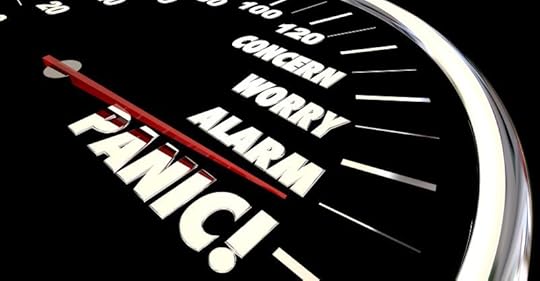The Panic Pandemic: How Media Fearmongering Led to ‘Unprecedented’ Censorship of Scientific Research

John Tierney, a former The New York Times reporter, in an article for City Journal explained how the “moral panic that swept the nation’s guiding institutions” during the pandemic was far more catastrophic than the viral pandemic itself.
Story at-a-glance:John Tierney, a former reporter for The New York Times, looks back over the pandemic, providing a timeline of the media-induced viral panic that led to censorship and suppression of scientific research on an unprecedented scale.Experts who spoke out against the official narrative were attacked and accused of endangering lives by questioning lockdowns.Numerous research journals refused to publish the results of studies that featured data questioning lockdowns, masks and other COVID policies.Certain states have stood out for their refusal to buy into the draconian public health measures that were adopted throughout much of the U.S. — Florida is chief among them and has a COVID mortality rate that’s lower than the national average.The “crisis crisis,” or the ‘incessant state of alarm fomented by journalists and politicians,’ is one reason why so many government, academic and policy leaders could support rampant censorship and suppress scientific debate for so long, all while propagating panic.Now that we’re more than a year into the pandemic, it’s crystal clear that the panic that ensued was unnecessary and the draconian measures put into place for public health were unwarranted and harmful.
John Tierney, a former reporter for The New York Times, looked back over the pandemic, providing a timeline of the media-induced viral panic that led to censorship and suppression of scientific research on an unprecedented scale.
In his article for City Journal, where he is a contributing editor, he explained that the “moral panic that swept the nation’s guiding institutions” during the pandemic was far more catastrophic than the viral pandemic itself.
Media-induced panic set off in March 2020
The panic was started by journalists beginning in March 2020, when the Imperial College COVID-19 Response Team released “Report 9” on the impact of nonpharmaceutical interventions (NPSs) to reduce deaths and health care demand from COVID-19.
The report’s computer model projected that intensive care units in the U.S. would be overrun, with 30 COVID-19 patients for every available bed, and 2.2 million dead by summer. They concluded that “epidemic suppression is the only viable strategy at the current time,” which led to lockdowns, business and school closures and population-wide social distancing. But as Tierney noted:
“What had originally been a limited lockdown — ‘15 days to slow the spread’ — became long-term policy across much of the United States and the world.
“A few scientists and public-health experts objected, noting that an extended lockdown was a novel strategy of unknown effectiveness that had been rejected in previous plans for a pandemic. It was a dangerous experiment being conducted without knowing the answer to the most basic question: Just how lethal is this virus?”
John Ioannidis, an epidemiologist at Stanford, was an early critic of the response, who argued that long-term lockdowns could cause more harm than good. Ioannidis came under intense fire after he and colleagues revealed that the COVID-19 fatality rate for those under the age of 45 is “almost zero,” and between the ages of 45 and 70, it’s somewhere between 0.05% and 0.3%.
In Santa Clara County, in particular, he and colleagues estimated that in late March 2020, the local COVID infection fatality rate was just 0.17%. “But merely by reporting data that didn’t fit the official panic narrative, they became targets,” Tierney explained. “… Mainstream journalists piled on with hit pieces quoting critics and accusing the researchers of endangering lives by questioning lockdowns.”
Journals refused to publish solid, anti-narrative research
The discrediting and censorship of researchers who spoke out against the official narrative — even if they included supportive data — became a common and alarming theme over the last year, one that extended to virtually every aspect of pandemic-related policy, including masks.
The “Danmask-19 Trial,” published Nov. 18, 2020, in the Annals of Internal Medicine, found that among mask wearers 1.8% (42 participants) ended up testing positive for SARS-CoV-2, compared to 2.1% (53) among controls. When they removed the people who reported not adhering to the recommendations for use, the results remained the same — 1.8% (40 people), which suggests adherence makes no significant difference.
Initially, numerous research journals refused to publish the results, which called widespread mask mandates into question. Tierney said:
“When Thomas Benfield, one of the researchers in Denmark conducting the first large randomized controlled trial of mask efficacy against COVID, was asked why they were taking so long to publish the much-anticipated findings, he promised them as ‘as soon as a journal is brave enough to accept the paper.’
“After being rejected by The Lancet, The New England Journal of Medicine and JAMA, the study finally appeared in the Annals of Internal Medicine, and the reason for the editors’ reluctance became clear: the study showed that a mask did not protect the wearer, which contradicted claims by the Centers for Disease Control and other health authorities.”
A similar experience was had by Dr. Stefan Baral, a Johns Hopkins epidemiologist with 350 publications, who wanted to publish a critique of lockdowns. It became the “first time in my career that I could not get a piece placed anywhere,” he told Tierney.
Harvard epidemiologist Martin Kulldorff also wrote a paper against lockdowns and couldn’t get it published, noting that most other scientists he spoke to were also against them but were afraid to speak up.
Kulldorff and colleagues soon banded together to write the Great Barrington Declaration, which calls for “focused protection” of the elderly and those in nursing homes and hospitals, while allowing businesses and schools to remain open. Soon after, they too were attacked
[…]
The Most Revolutionary Act
- Stuart Jeanne Bramhall's profile
- 11 followers



